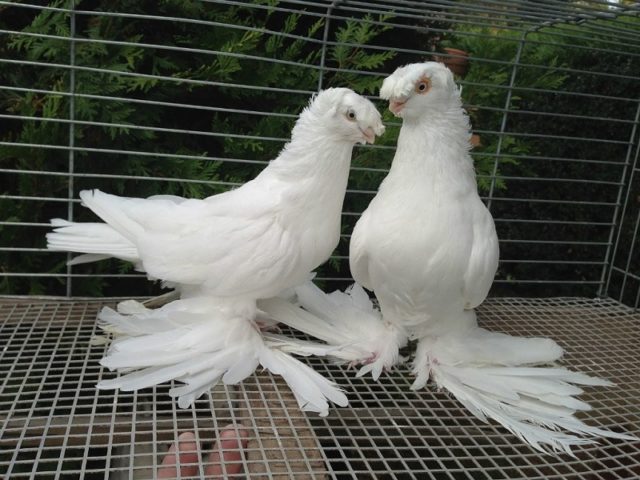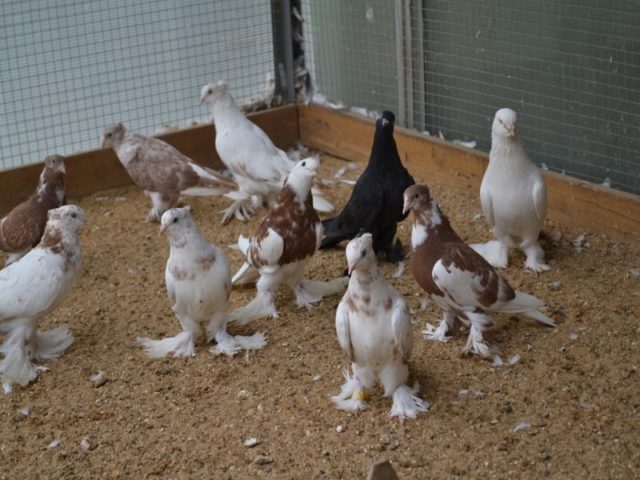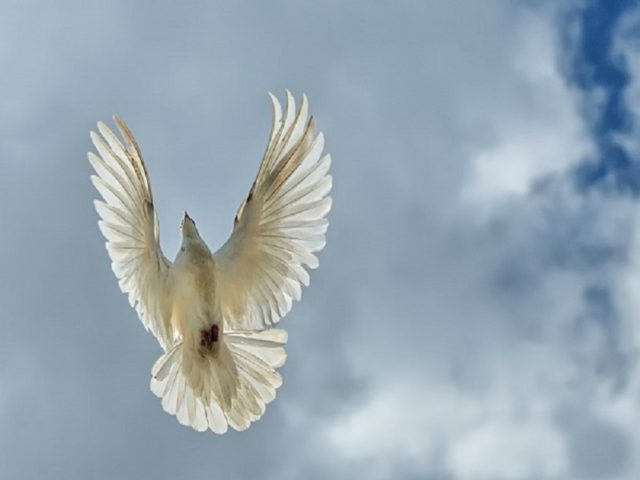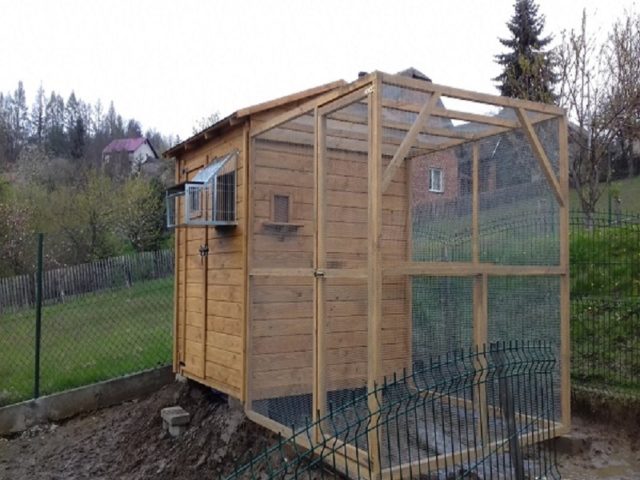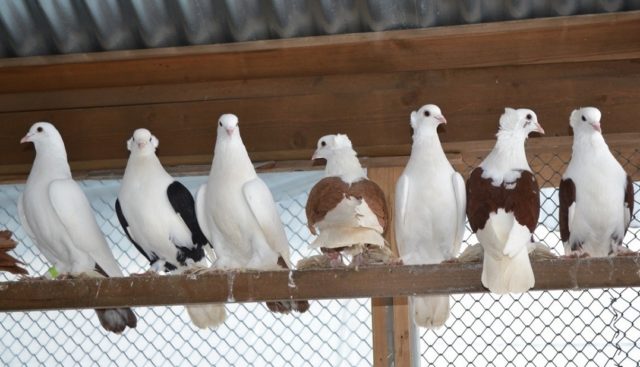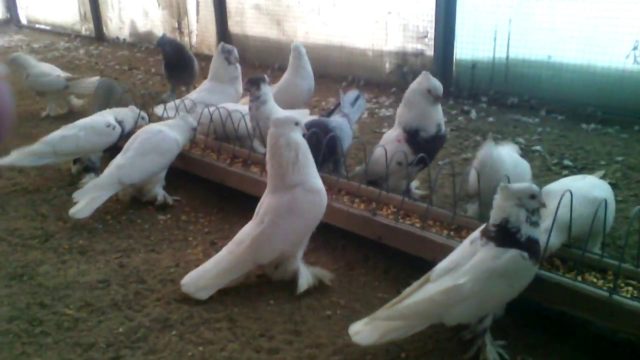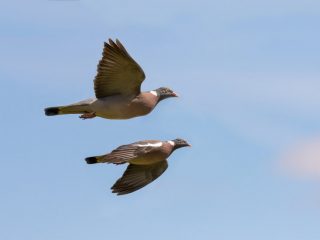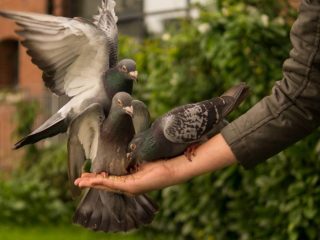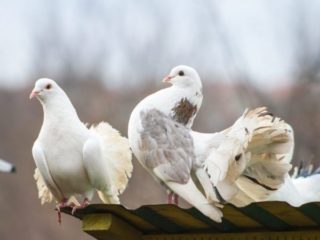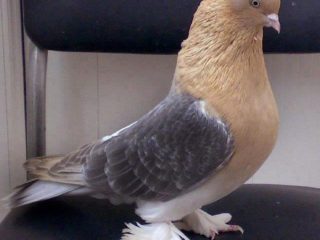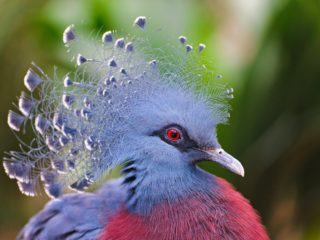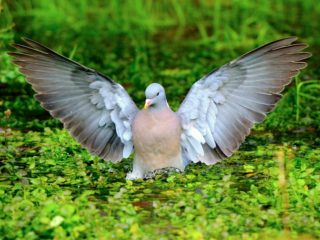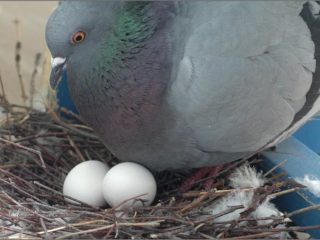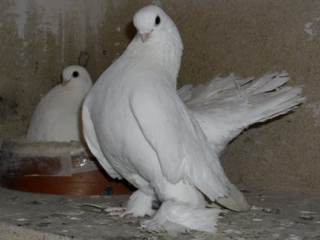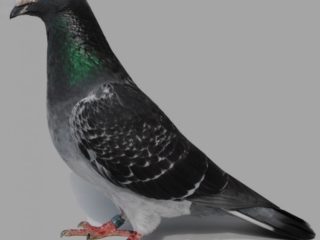Content
Andijan pigeons are especially popular among breeders. And this is not surprising. Thanks to their flight characteristics and beautiful appearance, birds take pride of place in sporting competitions and exhibitions. However, the breed requires certain conditions of maintenance and care.
History of Andijan pigeons
The history of the appearance of Andijan pigeons begins at the end of the 19th century. According to historical information, one of the residents of Iran moved to the city of Andijan, which is located on the territory of Uzbekistan. The Iranian brought pigeons along with his belongings. The birds amazed local poultry farmers with their ability to fly long distances. But they did not have exterior indicators. To combine these two qualities, breeders decided to cross these individuals with the local Ishilian breed. This is how Andijan pigeons appeared.
The breeders successfully completed the task. The breed has an attractive appearance and a long, beautiful flight. Therefore, Andijan pigeons quickly spread throughout Uzbekistan.
As a result of inter-ethnic events, from 1989 to 2010, Asian residents began to migrate to European countries. The settlers took local pigeons with them along with their acquired property. This is how the Andijan breed came to the CIS countries and Europe.
Breed characteristics and standards
There is a breed standard for Andijan pigeons. It characterizes the main characteristics, constitution, exterior and behavioral qualities of birds. Deviations from the stated requirements of world poultry organizations indicate the shortcomings and defects of the breed.
Description of appearance
Andijan pigeons have a fairly strong body. The average weight of birds is 320 g. Although there have been cases when this value reached 400 g. Body length varies from 35 to 40 cm. Body girth is 27 cm. Wingspan is 70 cm. Feather length is 10 cm.
External signs of the Andijan breed:
- body – long, muscular, slightly raised;
- chest – wide, well developed;
- tail – long, straight, with 12-14 tail feathers;
- wings – strong, with a tight fit to the body;
- neck – dense, with a smooth transition into the chest;
- head – oval, medium size;
- eyes – large, white or silver, with a milky iris;
- the beak is neat, strong, its color matches the shade of the head;
- forelock – long, narrow, slightly sloping, located at the back of the head;
- legs – erect, with a small number of feathers in the lower limb;
- paws - with spurs and sharp nails.
In total, there are more than 60 species of Andijan pigeons. Therefore, there are no strict color standards for individuals.
Andijan can be pure white, or with brown or black patches in the neck area.Red, brown and gray-lilac feather tints are also allowed.
Character
Andijan pigeons have a calm and peaceful character. They do not establish a hierarchy in the flock and do not conflict with other birds. But at the same time, pigeons are quite strong, resilient, agile and energetic. They adapt to any situation and also predict the nearest development of events.
As for fidelity, Andijan pigeons are attached to their owner. Even if the birds are tired or lost in flight, they will not land on someone else’s roof.
Parental instinct
Andijan pigeons have good parental instincts. They create the necessary conditions for the development of pigeons and rarely abandon them. Birds hatch, feed and protect their offspring without human intervention.
However, in birds there is no separation between male and female. They perform all actions together.
Flight characteristics
Andijan pigeons are high-flying fighting birds. Their movement through the air is distinguished not only by its unique style, but also by its flight qualities.
Birds are able to travel several hundred kilometers and rise up to more than 20 meters. Their flight time is from 4 to 6 hours. Some specimens manage to spend over 10 hours in the sky.
Andijan individuals are well oriented in the air. During the rise in height, the birds stay in flocks and perform a “pillar exit.” That is, they remain motionless for several minutes.
During the flight, pigeons can perform all kinds of somersaults for a long time. When performed, a characteristic click is produced. In poultry circles, this sound is usually called “fight”. This is where the name came from - fighting.
Keeping Andijan pigeons
According to reviews from poultry farmers, Andijan is a whimsical breed. Without certain living conditions, birds' aesthetic and flight qualities deteriorate. Various diseases develop that negatively affect the offspring.
Place of choice for poultry house
There are a number of specific requirements regarding the location of the dovecote:
- The poultry house should not be installed next to multi-storey buildings and tall trees. It will be difficult for Andijan residents to take off and land.
- The dovecote should be located away from electrical wires and telephone lines. Otherwise, individuals will increase the risk of injury.
- It is not recommended to place the premises near cesspools or landfills. The fact is that the immunity of Andijan pigeons is poorly resistant to pathogenic microorganisms.
Premises requirements
Pigeons of the Andijan breed cannot be kept in cages. To breed them, it is rational to build a free enclosure.
Basic premises criteria:
- Poultry house dimensions. For 1 Andijan bird, the air area of the dovecote is 1.5 sq.m. Floor area – 0.5 sq.m.
- Dimensions and location of windows. The optimal size of stained glass is 20x20 cm. Windows should be placed in fronts 1 m above the floor level.
- Door size. The width of the entrance opening is 0.6 m, height is 1 m.
- Construction material. When choosing raw materials for walls, it is recommended to give preference to wood.
Andijan pigeons do not tolerate drafts and noise well. Therefore, the walls of the room will need to be sheathed with plywood, and the cracks will need to be carefully filled with putty.
Poultry house arrangement
In order for Andijan pigeons to feel comfortable, optimal living conditions will need to be created in the poultry house.
The interior arrangement of the dovecote includes:
- Lighting. It will increase the length of daylight hours and serve as an additional source of heat. LED lamps are used as additional lighting.
- Feeders. Andijan pigeons should not be allowed to interfere with each other while eating. Therefore, devices for feeding birds are equipped with several sections.
- Drinking bowls. The best option for decorative pigeons is industrial automatic drinkers. This way the birds will always have clean and fresh water.
- Perches. It is recommended to choose wooden beams as crossbars for resting Andijan individuals. Their thickness should correspond to the size of the pigeons' paws.
- Nests. Structures for laying eggs and raising offspring should have several compartments. This approach will help to keep birds of different sexes and young animals separately in winter.
Carrying out sanitary and hygienic procedures
Andijan people lack cleanliness. Therefore, without timely cleaning, the pigeon coop quickly becomes dirty, and the birds develop an unsightly appearance.
Carrying out sanitary and hygienic procedures includes the following actions:
- daily change of litter;
- complete disinfection of the premises once every six months;
- airing the poultry house 2-3 times a week;
- Cleaning feeders and drinkers once every 2 days.
In addition, you will need to regularly monitor the health of Andijan birds. At the first signs of illness, you must immediately begin appropriate treatment measures.Otherwise, the pathology will quickly spread throughout the entire flock of pigeons.
Diet
The general characteristics of Andijan pigeons directly depend on their diet. The main feeding ingredient is grass. In summer, birds consume it fresh. In winter, pigeons are fed hay from herbaceous plants.
The diet should also include the following grains:
- millet;
- oats;
- rye;
- corn;
- barley.
From vegetables, Andijan birds should receive:
- boiled potatoes;
- chopped carrots.
Shell rock, fish oil, and eggshells are used as natural additives.
Andijan pigeons are fed 2 times a day. Before the flight they are given small portions. Upon returning to the dovecote, the birds are pampered with rich food.
Crossbreeding
To prevent the production of non-viable offspring or chicks with various abnormal defects, natural mating of pigeons should not be allowed. To maintain breed standards, Andijan birds are crossed for external characteristics. To do this, the breeder forcibly locks the selected pair in a separate cage for 12 hours. After this time, he releases them into the wild.
Increased productivity
Adult Andijan individuals lay two eggs. And young females are one thing. Laying occurs 8-9 days after mating, every 2 days.
Before the next egg appears, it is recommended to replace the first one with blende. This is done so that the dove does not immediately begin to heat it. Otherwise, the embryo will slow down in development and die.
The incubation period is 18-20 days.After which the chicks hatch from the eggs.
Conclusion
On average, Andijan pigeons live 15-20 years. During this period they do not lose their characteristic features. But breeding ornamental animals is not as easy as it might seem at first glance. Throughout their life cycle, they will need to organize optimal conditions for maintenance, care and care.
